
Metropolitan Busan: South Korea’s main gate to the outside world
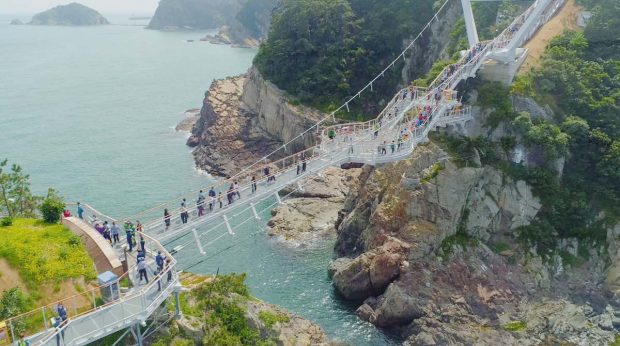
By Dr. Hassan Humeida
KIEL, GERMANY: Busan is considered one of South Korea’s most important metropolitan areas and a source of pride for every South Korean as it is South Korea’s premier commercial port and gateway to the outside world.
It is one of South Korea’s closest cities to Japan. There are only 190 kilometers that separate them from the two Japanese islands “Kyushu and Honshu”.
Busan is the main economic and cultural bridge connecting South Korea with the outside world. Its location as the country’s main economic center by the sea makes it close to major industrial and manufacturing areas in South Korea, such as “Ulsan and South Gyeongsang”.
Busan, which has an area of about 526 square kilometers, is the second most populous city in Korea with about 3.5 million inhabitants according to 2021 statistics. It is one of the cities with a relatively high population density with about 6,683 inhabitants/km.
Busan consists of two parts: New Busan and Old Busan. It has a unique location, nestled in a pristine valley on the shore of the Sea of Japan in Korea.
Busan is surrounded by a mountain range of wavy greenery, where many shrubs and herbs grow, and ancient Buddhist temples are dotted on its peaks and hills. It is connected by modern thoroughfares and seven bridges that soar majestically in the distance and are designed with unique architectural creativity. On Busan, the country’s tallest skyscrapers are clustered in space, stretching as far as the eye can see.
Busan’s skyscrapers soar, seeming to pierce the dense clouds. Above which is dense, streak-saturated sea fog rising into the air to land and exit on top of Busan’s grandiose buildings.
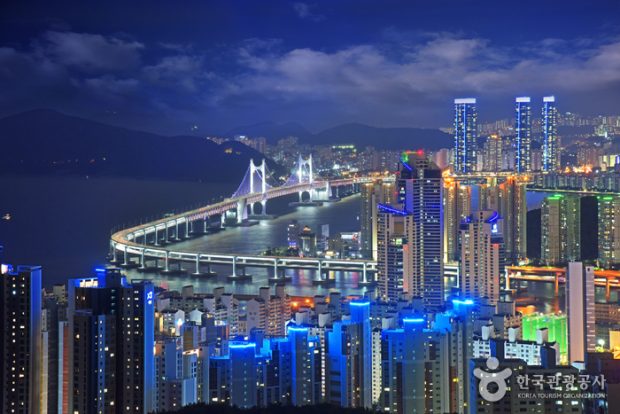
One of the most famous and important skyscrapers in Busan is the Hyundai International Motors and Transportation Company Tower. This world-renowned South Korean giant is one of the companies having a positive impact on the South Korean economy as a whole, elevating it into the ranks of the major industrialized countries that produce automobiles and advanced transportation.
Over the years, Hyundai International Corporation has contributed to South Korea’s development in many areas, such as being a major employer, but also supporting education, health, culture, sports and others.
Among active South Koreans, the Busan native, males and females, are known to be more energetic and skillful at work, optimizing or doing it well. Busanians are a symbol of hard work, responsibility and reliability in South Korea.
Busan is also home to many other industrial and non-industrial institutions: corporate and commercial institutions, as well as international film and cinema institutions.
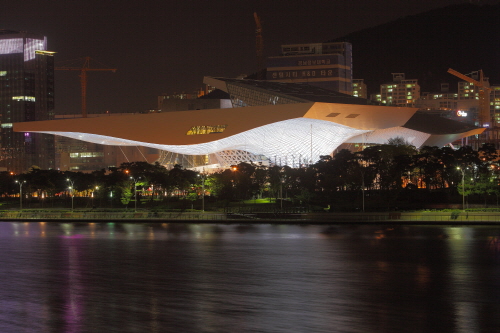
The film and film industry institutions in Busan are comparable to other international global institutions such as Hollywood and Bollywood in production, marketing and quality. As the Bosnian film and cinema industry plays an active role in its products and marketing, its profitability is expected to exceed that of its peers in the United States of America and India in the future.
This is due to the great demand for Busan products in this area “movie industry” from all countries around the world.
The institutions of film and cinema making have another futuristic endeavor with high ambitions and aspirations in the future.
They strive to develop new building blocks for film and cinema, for example: directing production towards materials that support values and correct morals, reject violence and aggression, fight oppression, racism, populism and exploitation worldwide, promote humanity through deterrence of injustice and inequality, work towards eradicating poverty, hunger and disease, and boost work and human development in all its forms to bring peace to the world.
Another important and current goal is to make contributions by this institution to fight climate change and global warming in a more modern way: To actively tackle the climate crisis and to visualize it in the form of excellent films for all age groups.
All this makes metropolitan Busan a destination for film and cinema stars from all over the world, especially those who have suffered from racism, mainly in their countries while they are trying to make films, and felt marginalized in their own homes.
Every year, the charming South Korean Dora Busan gets beautifully and charmingly ready for the annual film and cinema festival to attract and welcome visitors from the world of film and cinema from all countries.
A historically, culturally and economically rich city, Busan is undoubtedly one of the attractive cities in South Korea and Asia.
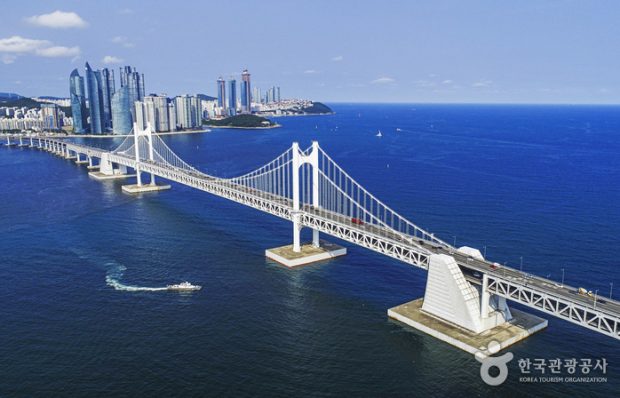
It has many prestigious universities, academies and sports clubs; beautiful museums and parks, famous shopping centers and international companies and ancient Buddhist temples and pilgrimage cities.
Tourist attractions in Busan include Seongju Beach, the first beach open for swimming in South Korea. This beach with its white sand and turquoise blue-green water is more than hundred years old. And stretching across the water is a transparent glass bridge called the Sunju Cloud Bridge, which is the longest walkable bridge over water in Korea. Walkers across this bridge can see the sea water and even fish under their feet.
In Gamcheon Village, near Seonju Beach, there are clusters of colorful small houses, which attract visitors from all over the world with their splendid and different colors.
In Jemcheon Village, it is relaxing to see the colorful hues of the small buildings, which convey a sense of warmth and comfort and embody the aesthetics of art. It should be emphasized here that these two villages stand as symbols of sustainability, clean air and healthy climate in Busan and South Korea.
There are small book shops on Bosu Dong Street, which stretches for about 200 meters. Its shelves are filled with new and old. This short cultural alley is frequented by many patrons inviting insatiable readers.
Hyundai Beach has traditional Hyundai tents for Korean food, and it is one of the most attractive areas for Busan visitors. This is due to the variety of foods in it, which are represented in fruits, fruits, meat, fish and various sea creatures. Food, especially seafood, is freshly prepared and presented to visitors in Hyundai’s tents. Various people roam the alleys of the Hyundai tents, often as a meeting place for celebrities.
The city of Busan is currently working hard to optimize this market. The long-term goal should be to preserve rare and protected species from the sea and not to market them.
Beomeosa Buddhist Temple is located on Geumjeongsan Mountain. The Temple of “Biomosa” with its majestic look on the top of the mountain, sometimes caresses the sun’s rays when it shines and sometimes touches the clouds when the density of the fog rises.
One of the best views of Busan during the day is the Olympic Yachting Beach that can accommodate about 1,300 yachts. This has clean water, which is regularly checked: “Use, clean water for sustainability”.
At night, 101 Bay appears across the sea. Here the skyscrapers rise majestically and pierce a beautiful light in the middle of the clouds. The famous buildings in 101 Bay include the Hyundai Park buildings, the large hotel buildings and many skyscrapers, which represent the most expensive apartments in South Korea and Asia.
The windows look directly at the sea with its pristine white beaches, crashing waves and open air. As a modern architecture, nothing was left out in the construction here in terms of modern construction, energy consumption and sustainable living in a healthy environment.
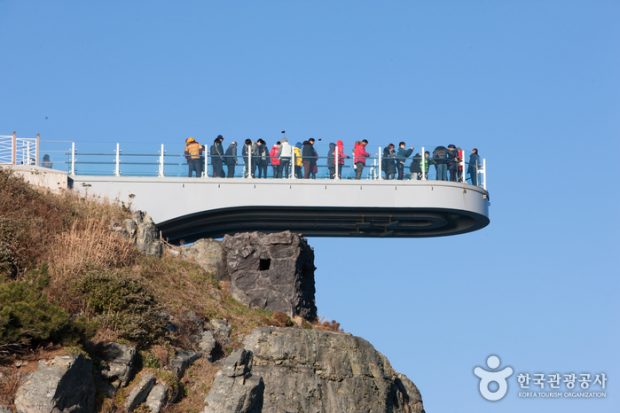
In summary, it can be said that the South Korean metropolis “Busan” and its enchanting surroundings are a symbol of old and new in one. This can be clearly seen in the basic layout of this world metropolis. It combines the traditional with the modern in a unique example.
Busan looks to the future in a sustainable way and, as a coastal metropolis and important port city, is well equipped to deal with climate change and its unforeseeable consequences.
In this respect, it is not only an example for South Korea and Asia, but for the whole world.
This is a metropolis that cannot afford otherwise, because Busan and other South Korean cities are those that lie on the open ocean and are the first cities that will pay the dear price or even disappear from the map forever when the global climate crisis worsens.
Busan deserves to stay here as an active, productive, promising metropolis. The economy may be booming to open up South Korea to the rest of the world as a major trading partner and a key player in development, innovation and sustainability.
In this way, full of cooperation and solidarity, Busan can make a positive contribution to itself, to South Korea, to the Asian region and to the rest of the world in terms of climate change and global warming.
E-Mail: hassan_humeida@yahoo.de


